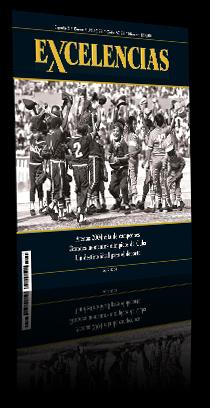Cradle of Sport Talents
A thesis devised by world-class Cuban experts in order to raise life quality based on human beings’ ability to live up to 120 years has become the cornerstone of Cuba’s sports movement.
Outstanding performances in international competition begin to shape up in the early stages of life through the application of educational methods that combine instruction and sport practice.
The emergence of the so-called daycare centers for preschoolers in 1962, paved the way for the first step forward in that direction. At that age, most children live in a world full of fantasy, dynamism, gaudiness and participation games that start honing their sport talents with the help of preconceived programs.
In elementary school, it’s commonplace to see kids practicing swimming, gymnastics and other not-so-hard sport activities. From that grass-root level all the way to college, physical education is part of all teaching programs as a mandatory subject matter.
In the same breath, the teaching of regular classes is combined with sport competitions between schools with a view to screen new talents. Those kids with bigger physical possibilities enroll the Schools of Sport Initiation (EIDE) –there’s one in each and every of the country’s fourteen provinces. These educational centers have chipped in some of Cuba’s biggest all-time stars, like javelin thrower and Olympic gold medalist Maria Caridad Colon
Another case in point is Alberto Juantorena, winner of two gold medals in the 1976 Olympic Games in Montreal. Juantorena was born in Santiago de Cuba and polished up his sport skills in his hometown’s EIDE school. Later on, he went to the Higher School of Athletic Upgrading (ESPA), another link in Cuba’s sport development pyramid.
The Facilities Alongside the thoroughness these youngsters are educated, trained and formed under Cuba’s sport principles, the State has earmarked considerable lump sums of money for outfitting the country with an infrastructure of over 10,000 facilities for the practice of different sports.
The amount of sport installations outnumbers those that already existed on the island nation before 1960. The country has jumped from 951 facilities in 1959 to a whopping 11,159 in the year 2000. Another boosting element in this takeoff was the organization of the 11th Pan American Games in Havana and Santiago de Cuba in 1991. Several stadiums, venues and all-purpose halls were built for the occasion.
Training facilities in the country harbor as many a half a million Cuban athletes in 38 different sports, not to mention the scores of fellows who practice in their homes after a long toilsome workday or once the housekeeping chores are through.
Within the investment package bankrolled by the Cuban State, the “Cerro Pelado” and “Girardo Cordova Cardin” higher schools of athletes (both in Havana) are worth mentioning. For all would-be champions, these schools are the real McCoy as far as high performance sports are concerned.
These are the centers that gather all of Cuba’s national teams in thirty-plus sports. Their 2,000 students are educated here from elementary to college levels.
Founded 38 years ago in 1966, the Cerro Pelado is the flagship of Cuba’s high performance sports. It was named after a freighter that was overhauled to accommodate the Cuban delegation to the Central American and Caribbean Games in Puerto Rico after U.S. authorities had banned the Cubans from entering the island by plane.
The Cerro Pelado consists of several buildings outfitted for educational purposes, the practice of sports, medical attention and living quarters for sportsmen. A part of the lodging bloc is being refurbished right now to house foreign competitors from Nigeria, Germany, Italy, Hungary, Slovakia, Mexico and Ecuador, among other countries that send their athletes to Cuba for training and preparation.
This Cuban landmark is now equipped with a 20-room apart-hotel that provides hot-and-cold water supply, pay-TV, phone hookup to any country on earth, top-notch food and the possibility of training and spending time with some of Cuba’s best sport stars.
As we speak, one of the three blocs under construction is fully operational and ready to welcome foreign delegations. The number of hotel rooms there will soon be enhanced to sixty accommodations.
Three departments, divided into the Sciences, Humanities and Practical Subject Matters classrooms, and with a staff of 29 professors, teach elementary, junior, junior high, bachelor, technical and college education at the Cerro Pelado.
Graduates with degrees in Physical Education –at junior high, technical and college levels- are also members of the country’s national teams.
Even though the profiles of these students are usually linked to sports for obvious reasons, some turn to other branches of knowledge and enroll in technical and humanity courses. These other students are inserted in an adjustable teaching plan since modern-age competitions sometimes oblige them to travel abroad frequently and make them lose weeks of classes. Once they come back home, they make it up for absences and eventually catch up with their classmates.
The “Girardo Cordova Cardin” Higher School of Athletes came into being in the wake of the 1991 Pan American Games in Havana. As a matter of fact, the building of a new track and field stadium, a cycling racetrack and compounds of tennis courts and swimming pools turned Eastern Havana into a sports city.
The national teams of those sports moved in the premises with a view to cash in on the proximity of the facilities on the one hand, and in an effort to relieve the overcrowded Cerro Pelado on the other. The Girardo Cordova Cardin concentrates roughly 30 percent of Cuba’s high-performance athletes and, coincidently, a third of the Cuban delegation traveling soon to the Olympic Games in Athens.


































